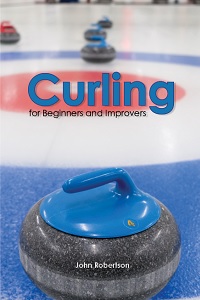Double-Blind Placebo-Controlled Studies
September 18th, 2009 by PotatoSo I was out at a conference in Victoria, and while I’ve been to a lot of conferences before, it was the first physician-oriented scientific conference I’ve been to. I must say that the quality of the presentations is vastly different than that seen at a typical conference for scientists. The clinicians were much more confident, articulate speakers, like smooth salesmen, which stands in stark contrast to the introverted scientist reading his slides. Unfortunately, they also tended to present fairly shaky data as facts and guidance for future treatments.
For example, there were some presentations on the use of botox and acupuncture to treat chronic pain. The presentations were basically “this worked for these patients, everyone should try it.” Now, here’s the thing about research in medicine: you really need double-blind placebo-controlled studies before you can really say anything with a great deal of confidence, before you really have proof of a treatment working. When this was pointed out to one of the presenters, he countered by saying “Well, the proof is that these people keep coming back and paying for more treatments; these aren’t covered by provincial medicare. If it wasn’t working, they wouldn’t keep coming back.” A bit later in response to another question, another of these practitioners said that about 30% of the people he tried his alternative treatments on returned for more.
The thing is, there’s what’s known as the placebo effect: even if you give someone something that shouldn’t do anything to or for them, some portion of people will find some measure of effect from that treatment. The size of the placebo effect varies greatly depending on how the placebo is presented and what the placebo is acting on. The placebo effect is hard to understand, but we believe that it’s largely “mind over matter” and as such, it seems to work best on ailments that are largely in your head to begin with. If you’re sad, and a respectable looking fellow in a white lab coat hands you a pill and promises that it will make you feel less sad, you’re likely to feel less sad even if that pill is just gelatin-encased starch. Likewise with pain: from a number of studies, it seems that about 30% of people find that their pain gets about 30% better when damned near anything is tried. Pain is a complex phenomenon, but it is at least partly sensation and partly emotional, so it’s something that is easy prey for the placebo effect. Contrarily, something much more objective like a broken bone or open wound is less susceptible to the placebo effect.
So I found it rather disingenuous that when a self-selected sample of people (those who come in to a doctor’s office ready to pay for acupuncture must already believe it may work) has some measure of pain relief, that a doctor can extrapolate from that to suggest that acupuncture is a generally effective therapy for pain.
The double-blind part means that the subjects in a study must not know whether they have the real or placebo treatment: if they knew, it would really eliminate the point of the placebo. That’s blinding. Double-blinding is when the experimenter also does not know, since unconscious clues might be passed to the subjects. All important stuff in research, but let me get back to the placebo effect.
What’s interesting is that placebos are almost as effective as some FDA-approved treatments, and often with less severe side effects (though perhaps somewhat unsurprisingly, placebos also have side-effects; mind over matter cuts both ways). However, it’s generally considered unethical for a doctor to prescribe a placebo because it involves deceiving the patient.
Along with the placebo effect is the tendency for patients to lie and pretend they’re all better when a treatment is noxious. Take, for example, trepanation. Whether or not your chronic pain was cured by the medicine man drilling a hole in your head, you sure as hell were going to shut up about it or else he’d go and drill another one. I haven’t seen it reported, but I also have to wonder if there might be an under-reporting of effectiveness for some addictive treatments: could patients over-report their pain if they’re hooked on morphine, saying it isn’t working when it is in order to get an extra dose?
There was a good article about the placebo effect in Wired recently, even touching on the subtle aspects of pill design that can enhance the placebo effect.



 Questrade: ETFs are free to trade, and if you sign up with my link you'll get $50 cash back (must fund your account with at least $250 within 90 days).
Questrade: ETFs are free to trade, and if you sign up with my link you'll get $50 cash back (must fund your account with at least $250 within 90 days).  Passiv is a tool that can connect to your Questrade account and make it easier to track and rebalance your portfolio, including sending you an email reminder when new cash arrives and is ready to be invested.
Passiv is a tool that can connect to your Questrade account and make it easier to track and rebalance your portfolio, including sending you an email reminder when new cash arrives and is ready to be invested.